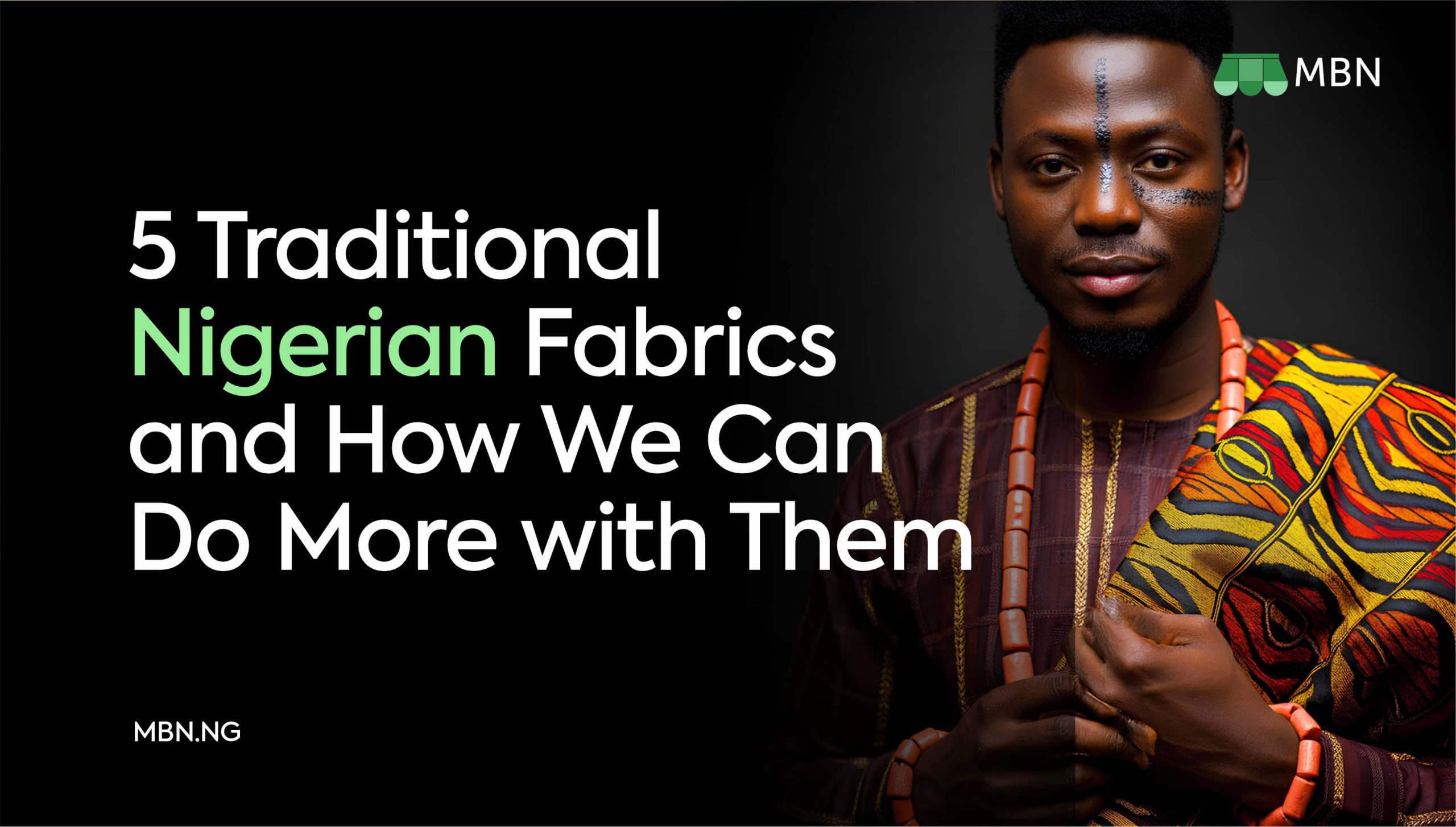When it comes to having fabrics that tell our stories, propel our cultures, and preserve our histories, Nigeria is not lacking in this department. However, we can do so much more with these beautiful fabrics.
The global fashion industry is valued at over $1.7 trillion and has enough room for the stories and regal beauty Nigerian fabrics have to offer the world.
Here are some traditional Nigerian fabrics that we can use to reintroduce Nigerian fashion, regalia, culture and ingenious craftsmanship to the rest of the world and two simple suggestions on how to do that:
Akwa Ọcha
The Ubulu Uku people of Anioma in Delta state are believed to have started weaving and wearing Akwa Ọcha a long time ago. Akwa Ọcha stands out for its white colour which also gives it the name akwa ocha which directly translates to “white cloth.” Over the centuries, the fabric has spread throughout Delta state and into some parts of Anambra state where the communities that wear them today use them as ceremonial regalia.
Akwete
The name Akwaete comes from the name of the community of Ndoki, known for weaving this fabric, Akwaete. The fabric is woven by hand with a loom and is popular in many parts of present-day Abia state. Like the Akwa Ọcha, the Akwaete is mostly worn for marriage ceremonies, child naming ceremonies, burials, new yam festivals and other cultural events
A’nger
Originating from the Tiv people of present-day Benue state, the a’nger dates to the 16th to 17th century. It is a striped black and white loom-woven fabric. Because of its pattern and colour, the a’nger is believed by some, to be inspired by the stripes on the body of a zebra. The Tiv people of Benue state still wear this fabric mostly for marriage ceremonies, child naming ceremonies, burials and other cultural events
Aso oke
Of all Nigerian fabrics, the Aso oke is the only one to have achieved some level of global popularity. This fabric which has successfully permeated our popular culture started existing in the1600s in Iseyin, Oyo state, where people weaved it with a loom. Today, the fabric is popular among Yorubas who wear it mostly for marriage ceremonies, child naming ceremonies, burials and other cultural events.
Mudukare
Fulani communities have been making and wearing the mudukare for over 500 years now. Though the fabric is woven almost throughout Northern Nigeria, it is most popular among Fulani people.
The Mudukare stands out as the only fabric worn in everyday clothes as well as outfits for cultural events.
Incorporating Nigerian Fabrics into Contemporary Fashion
To invite these fabrics mentioned above into the contemporary Nigerian fashion industry, designers and stylists can:
1. Design current and trending styles completely with any of the fabrics.
2. They can also combine local fabrics with other (foreign) fabric types that are more contemporary – like cotton, jeans and corduroy.
